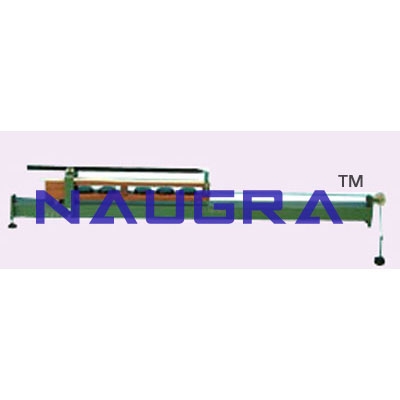- Civil Lab Mechanical Lab Engineering Lab Equipments
- sales@didacticlabequipments.com

CAT NO: DIDACTICNLE-Export-056021
Fletcher's Trolley Engineering Lab Training Systems.
Features
Traditional design
Self-contained
Bench mounted
Total mass of moving system can be maintained constant for different
acceleration masses
Five trolley masses
Acceleration determination by ink trace
Confirmation of Newton's Second Law
of Motion
Determination of Gravitational Acceleration
Three year warranty
Range of Experiments
To show that a force causes a mass to accelerate, and that the acceleration is proportional to the force
To compare experimental and theoretical values of forces required to accelerate a given mass
To determine the acceleration due to gravity, g
Description
This
type of equipment has been used for many years to introduce students to
accelerated linear motion, in particular the dependence of the
acceleration on the net force causing the motion. Confirmation of
Newton's second law of motion and the determination of gravitational
acceleration are possible.
This strongly built traditional
apparatus produces very accurate results. The trolley has five removable
weights. During an experiment, the total mass of the moving equipment
can be maintained constant by transferring weights from the rear of the
trolley to the load hanger.
Acceleration is measured using an
inked brush attached to a vibrating arm. This traces out an oscillatory
trace on a piece of paper fixed to the trolley.
This equipment is
part of a range designed to both demonstrate and experimentally confirm
basic engineering principles. Great care has been given to each item so
as to provide wide experimental scope without unduly complicating or
compromising the design. Each piece of apparatus is self-contained and
compact. Setting up time is minimal, and all measurements are made with
the simplest possible instrumentation, so that the student involvement
is purely with the engineering principles being taught. A complete
instruction manual is provided describing the apparatus, its
application, experimental procedure and typical test results.
